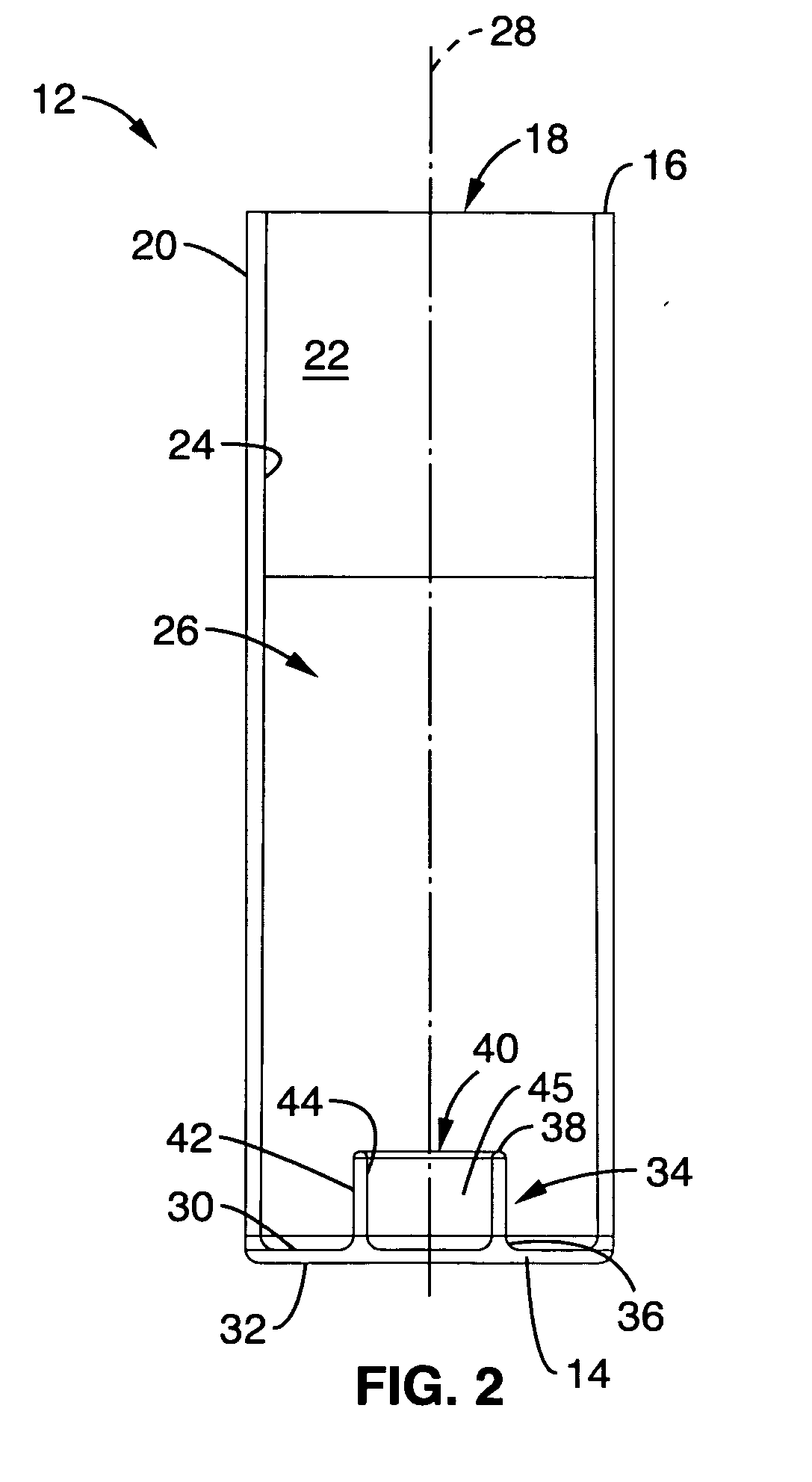Apparatus and method for separating and isolating components of a biological fluid
a biological fluid and apparatus technology, applied in the direction of centrifugal force sediment separation, other medical devices, intravenous devices, etc., can solve the problems of inability to maintain a seal, inconvenient extraction method, and inability to maintain the precise inner diameter
- Summary
- Abstract
- Description
- Claims
- Application Information
AI Technical Summary
Benefits of technology
Problems solved by technology
Method used
Image
Examples
Embodiment Construction
[0066]Considering the drawings, wherein like reference numerals denote like parts throughout the various drawing figures, reference numeral 10 is directed to an embodiment of a device for separating and isolating components of a biological fluid and reference numeral 310 is directed to another embodiment of the device for separating and isolating components of a biological fluid.
[0067]Referring now to FIG. 1, and in one embodiment, the device 10 is comprised of a main centrifuge tube or container 12, a tube cap assembly 46 for selectively closing the container 12 for defining an enclosure 48 for receiving and containing a biological fluid having multiple components, a float assembly 130 partitioning the enclosure into a first or lower volume zone 260 below the float assembly 130 and a second or upper volume zone 262 above the float assembly 130, and a flexible tube 124 operatively coupled between the float assembly 130 and the tube cap assembly 46 for traveling up or down with the f...
PUM
| Property | Measurement | Unit |
|---|---|---|
| density | aaaaa | aaaaa |
| density | aaaaa | aaaaa |
| density | aaaaa | aaaaa |
Abstract
Description
Claims
Application Information
 Login to View More
Login to View More - R&D
- Intellectual Property
- Life Sciences
- Materials
- Tech Scout
- Unparalleled Data Quality
- Higher Quality Content
- 60% Fewer Hallucinations
Browse by: Latest US Patents, China's latest patents, Technical Efficacy Thesaurus, Application Domain, Technology Topic, Popular Technical Reports.
© 2025 PatSnap. All rights reserved.Legal|Privacy policy|Modern Slavery Act Transparency Statement|Sitemap|About US| Contact US: help@patsnap.com



